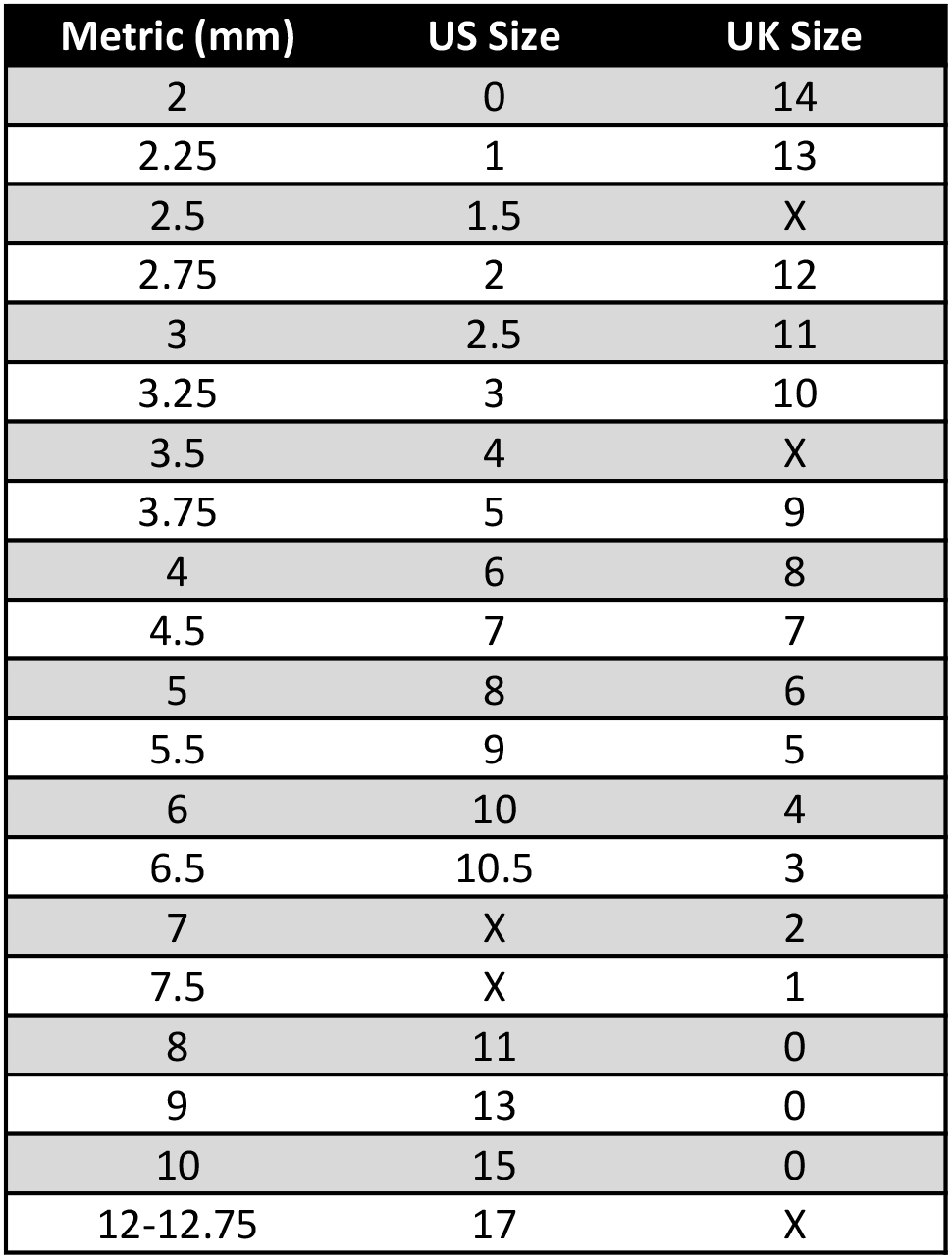Needles and Conversions
Knitting needles can be bought from many places, this obviously means that there are a lot of different variations and measurements for them too. Here is a short explanation to help summarise the different types of needles that are available to you - and some reasons why they may be better or worse for you - along with a chart to help with needle size conversions.
Needles:
There are many needle types out there to choose from, and which ones you decide to use can be influenced by each needles purpose, what your preferences are, and how much money you are willing to spend.
Here are the different forms of knitting needles:
-
Straight: These are the needles with one pointed end, where the other end has a small square, usually with the size printed on it.

-
Circular: Used when ‘Knitting in the round’ i.e., making something with a tube shape like a hat or a sock. However, they can be used just like normal needles too.

-
Interchangeable: Much the same as circular needles, these provide the option of swapping out the needle or cord length.

-
Double-pointed: Mainly used in smaller projects, they are shorter than straight needles and can serve the same purpose as circular needles.

-
Cable: Used in cable knitting, these needles keep your stitches safe while you are not working on them.

Other useful needle tools:
- Crochet hook
- Darning needle
- Stitch marker
- Needle size gauge, holes, and ruler
Knitting needles are commonly made from one of the following materials:
![]() Metal: The most common material, these are strong and durable.
Metal: The most common material, these are strong and durable.
![]() Bamboo: Great for those just learning to knit as stitches are less likely to slip off.
Bamboo: Great for those just learning to knit as stitches are less likely to slip off.
![]() Plastic/Acrylic: A very affordable option, they are lightweight making them especially great to use with jumbo yarn.
Plastic/Acrylic: A very affordable option, they are lightweight making them especially great to use with jumbo yarn.
![]() Wooden: Provide a smooth knitting experience but can tire you out easily as they are heavy. They are often more expensive too.
Wooden: Provide a smooth knitting experience but can tire you out easily as they are heavy. They are often more expensive too.
![]() Carbon fibre: These needles are a good mid-point between metal and bamboo and are reasonably affordable.
Carbon fibre: These needles are a good mid-point between metal and bamboo and are reasonably affordable.
Conversions:
Unfortunately, not every part of the world uses the same scale for their measurements. It can be confusing trying to work out which of your needles from a British company to use for an American pattern or vice versa. It is always best to use a gauge for this to check, but if you cannot get your hands on one, here are some conversions for you.
Note: X means there isn’t a needle to fit that measurement.

Picking the right needles to fit your yarn and project can bring the whole work together. If the conversions here don’t help you, you can always pick up a gauge and work out your needle size that way.
Now you have the knowledge to go on and make amazing projects, regardless of the size of your needles or where they’re from. What needle and yarn combination will you choose and what will you create with it?
